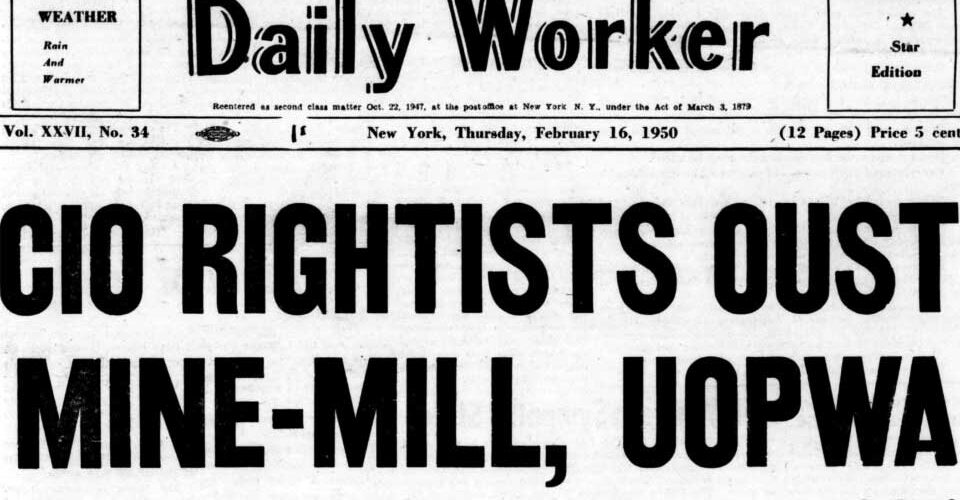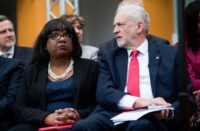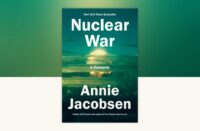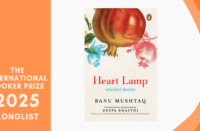Trade unions resist capitalism but do not abolish it. However, Lenin said trade unions are the schools for revolution: it is from there the communist parties traditionally draw their cadres. For a worker, trade union consciousness is natural because they fight for wages to survive, but the fight for socialism is not natural.
Capitalism penetrates into every area of human life and trade union is no exception, how trade unions are co-opted to abandon class consciousness and suit imperialism is what this book The Blue Collar Empire explains. The book tells how trade unions in America like the AFL-CIO (American Federation of Labour – Congress of Industrial Organisations) was used by the CIA to undermine workers at home and abroad. “Blue collar” is a term used to denote manual workers and the book narrates how the AFL-CIO leadership, in the name of promoting “free” and “democratic” trade unions all over the world, was inherently anti-communist. This Blue Collar Empire collaborated with the CIA to eliminate militant trade unionists, discouraged class struggle, rejected the overthrow of capitalism and turned the trade unions into an appendage of US foreign policy and hence mockingly called “AFL-CIA”. This came under scrutiny from the rank and file during the Vietnam war when the working class started questioning their leadership about the support for imperialism.
The book explains how the AFL-CIO, by getting involved in destroying radical trade unions around the world, facilitated the capital flow towards low-wage destinations through offshoring of production, thus reducing the bargaining capacity of trade unions. The neo-liberal era after the Cold war started the “race to the bottom” of wages and the American middle-class dream became a nightmare. After the fall of the Soviet Union, the worldwide implementation of neo-liberal policies considered social welfare, corporate regulations, collective bargaining and strong public sector as inefficiencies.
After WW2 the term “free” unions, which was supposed to mean unions free from the influence of the employers and state, took a different meaning: namely, unions that were free from communists. The AFL-CIO did not support the BDS movement against the apartheid South Africa until 1986 because of ANC’s Communist connections. If Truman doctrine was a policy of containing the spread of communism, the Marshall plan – originally called the European Recovery Program – achieved that by pumping 13 billion dollars to rebuild western Europe devastated by WW2. The AFL endorsed the Marshall Plan since it was against communism and the strategy created a demand for the US goods in Europe, thereby creating jobs and better wages for its membership at home. The Soviet Union identified the Marshall plan as an imperialist strategy to create markets for US goods and an opportunity for Wall Street to control finances and Europe’s economy.
After the success of Marshall Plan, imperialism turned its attention to third world countries and the Blue Collar Empire functioned as a conduit to supply money to topple anti-imperialist governments and weaken radical trade unions. A few months after Iran’s Democratically elected Mohammad Mosaddegh was removed from power in a CIA coup, Eisenhower alloted 4.5 billion dollars for the coup in Guatemala (1954). Jacobo Arbenz was removed from power in a CIA-sponsored coup after portraying him as pro-Soviet Union. Arbenz expropriated land from United Fruit Company through land reforms. The AFL had a role in funding the Union of Free Workers to depose the government. Even a small state of Kerala in Southern India was not spared, money was spent to defeat Communist party in the 1957 elections. Kerala is the first place in the world in which a communist party came to power through elections, but two years later the government was dismissed undemocratically.
In Cuba the Batista dictatorship was supported by AFL-CIO and any criticism of the regime was silenced. The AFL-CIO claimed that it worked for “free” trade unionism but in Brazil it was hand in glove with the CIA in removing democratic Joao Goulart government and instead installed a military dictatorship. In Guyana (1964), Cheddi Jagan’s left government was defeated in elections after a CIA sponsored strike against his labour reform bill. When Lyndon Johnson became unpopular because of the Vietnam war, he wanted peace negotiations, but the AFL leader Meany was so thirsty for war he said that the US should continue the war on Vietnam until the communists were completely defeated. In 1970, anti-war student activists were beaten up by workers using their tools as weapons during a rally in Lower Manhattan. This unprovoked attack called the “Hard Hat riot” was planned by a union affiliated to AFL-CIO and the workers were paid for the time they went rioting.
During the American civil war, Marx sent a letter to Abraham Lincoln which said: “labour in white skin cannot be emancipated as long as labour in black skin is branded.” The emancipation of the proletarians depended on emancipation of all, whereas, AFL-CIO was fragmenting the working class unity abroad by eliminating the radical sections of it thereby weakening the working class at home. Working class internationalism depends on opposing the US foreign policy; instead AFL-CIO did the opposite to serve imperialism and assist the exploitation of workers abroad. In the memorial service after the death of AFL leader Jay Lovestone, it was remarked that there were more CIA men than labour men. This was the legacy of the Blue Collar Empire.
Those who have questions about how the trade union movement and Communist parties all over the world became weaker, this book can provide answers.
Blue-Collar Empire: The Untold Story of US Labor’s Global Anticommunist Crusade by Jeff Schuhrke is available to buy in bookshops.






